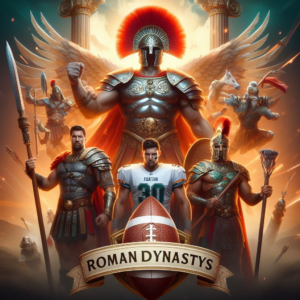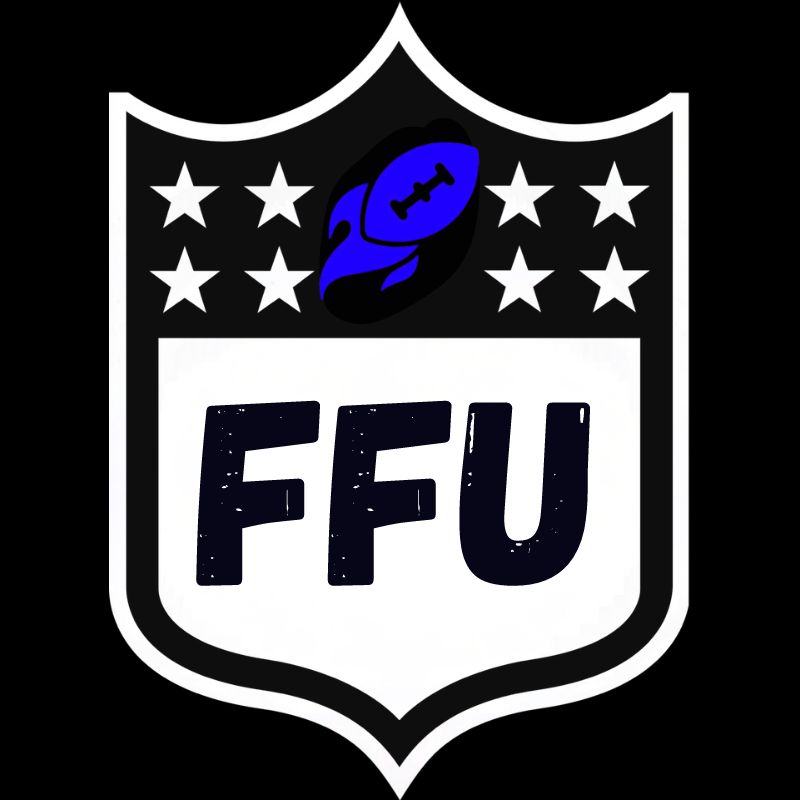For the general public, a standard fantasy football league suffices. If you’re reading this article, you may have grown weary of normal leagues and would like to try something new. Crash Course, a Fantasy Football Universe series, delves into unique formats. So, let’s start with “Dynasty Decoded: Unleashing the Fantasy Glory of Dynasty”.

How Does it Work?
Dynasty leagues are not that much different from the redraft leagues you likely started with. The only difference is that there is an added emphasis placed on younger players because you keep your players from year to year instead of drafting a new team every season. Consider this format the Madden Franchise mode of fantasy football.
How is it different?
As I stated above, there is only one real difference between redraft and dynasty leagues, you keep your players. In this format, you see a major shift in Average Draft Position (ADP). The aging superstars who are early-round picks will often fall several rounds due to their age and fear of injury risk. On the flip side, young players who haven’t fully broken out yet can go several rounds ahead of their ADP due to their projected ceiling.
Think of dynasty leagues as a never-ending redraft league where you keep your players and instead only do a 5-round rookie draft every year instead of a full startup draft.
How does the Draft work?
The startup draft can be done in three ways:
- Veterans & Rookies Together: one big draft with all players available for selection. These are typically 20-30 rounds in length.
- Veteran & Rookie Separated: this would include one startup drafted with veterans only and would typically last 20-25 rounds and would then be a supplemental rookie draft afterward that lasts five rounds and features only rookies.
- Veteran & rookie Picks: This is a mix of Option 1 & 2. It’s a 20-25 round startup draft that includes all the veterans. The only difference is that rookie picks can be drafted in the main draft as Kickers or DST players. From there, the rookie picks that were selected are converted to a rookie draft order and a regular supplemental rookie draft is held.
A look at the Rosters
Rosters are open to league preference, but a typical roster is between 20-30 players and usually features approximately five taxi squad spots that are for rookies only and serve as your minor league farm system.
These taxi squad players are rookies only and have to be removed from the taxi roster once they have completed their rookie season. A rookie can be called up onto your main roster from the taxi squad at any time but once they do, they can’t be sent back down to the taxi squad again.
Deeper is typically better in dynasty leagues as managers do not have the luxury of thinking short-term and may have large numbers of injured players on their team at one time and do not want to drop them. In a redraft league, you would simply drop the injured star and add someone off the waiver wire, but in a dynasty league, you would have to place them on the injured reserve and use one of your bench players. That is why dynasty leagues require larger benches than redraft leagues.
How does the Waiver Wire work?
As always, the waiver wire settings are a matter of personal preference and vary depending on the league. The only thing that is universally true across all dynasty leagues is that the waiver wire is almost non-existent. With how deep the average roster is, there are very few players left on the waiver wire at a given time. Instead, the typical waiver wire claims consist of backup running backs who gained value due to injury, backup quarterbacks starting in an emergency, and receivers who came out of nowhere to relevance.
Rookies can also be a common target on the waiver wire and are often the best way to find a free star in a dynasty league. Often the rookies drafted, especially in shorter rookie drafts, are not the ones who end up fantasy-relevant. I always like to keep a rookie watch list for my dynasty waiver wires.
How the scoring works
Again, scoring is not impacted by the league and can be done in any manner of your choosing. There is no wrong or right answer here, it’s all up to you and your league mates.
The Consensus Strategy
- Prioritize Young Players: This is probably the most common tactic. All the young players suddenly skyrocket in dynasty startup drafts. This is a solid strategy, but not necessarily the one that will bring you the best value.
- Draft Depth at Each Position: As most leagues have little to nothing left on the waiver wire, it’s often important to make sure you have multiple players at each position. While you may start only one quarterback, a bye week or injury could leave you without a startable player in a lineup slot.
- Punt Running Backs: Running backs tend to have the shortest shelf life of any position in dynasty leagues. For this reason, many managers will load up on the positions that tend to last longer such as wide receiver and quarterback, while punting the running back position and making depth picks later on in the draft to fill out their running back room.
- Draft For Value, Trade For Need: This one can be tough, especially in rookie drafts where you have a full roster and are looking to fill a specific positional hole. I realize that a team with a glaring need at running back would be tempted to use their first-round rookie pick on a running back, but in superflex leagues that can often be a disaster. Instead, draft the best available player and attempt to trade for your needs later on in the season.
My Strategy
- Draft To Win Year 1: It’s become all the rage of late to follow the Prioritize Young Players strategy. For this reason, I will often draft a win-now team as many of the best players can be had at a significant discount due to their age. Even if I determine midway through the season that I’m not a contender, I can still trade away these players to winning teams for future draft picks.
- Stockpile Value: This strategy piggybacks on the last one. Often in the middle rounds of dynasty startup drafts, you can get a run on aging running backs and wide receivers that are an excellent value and have fallen much further than they should have. Don’t overthink it, just stockpile the undervalued veterans.
- Prioritize Proven Talent Over Projection: To piggyback even further on the first two strategies, it can often be beneficial to draft the aging veteran with a proven track record over the unsure commodity of a young player. In dynasty leagues, many rookies will be projected over proven stars because of their age and projected ceiling, ultimately many of these rookies will fall short of that ceiling, so why not pick the proven guy?
- Draft Your Handcuffs: The waiver wires are a barren wasteland that can leave you short on replacements if you have an injury. So, in the late rounds, it is a solid idea to draft your starting quarterback backup as well as the handcuff for your star running backs.
In Closing
This format is a true labor of love. Dynasty leagues are not for the casual fantasy player. I often hear that many dynasty managers have checked out during the offseason, this is not the format for that type of manager. In a dynasty, there is no offseason.
Dynasty leagues are for the sick degenerate fantasy managers who want to live and breathe football all year round. If you play in a redraft league, you will be a big fan of NFL football games. If you play in a dynasty league you will find yourself a big fan of all things NFL, the games, the draft, the combine, all of it!
Don’t forget to check out the rest of the Crash Course Series. Take a look at the Rookie Draft from The 2024 Fantasy Football Universe Dynasty League.


